Table saw dolly lifter
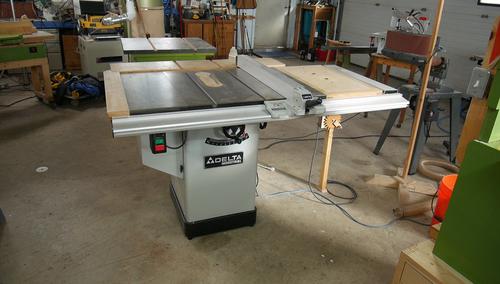 I needed to move my table saw out of the way, but I don't anticipate moving this saw often
(in my previous shop, it stayed in the same spot
for over 9 years).
I needed to move my table saw out of the way, but I don't anticipate moving this saw often
(in my previous shop, it stayed in the same spot
for over 9 years).
I came up with a clever table saw lifter for my old contractor table saw. But now I wanted to move this table saw but didn't want to attach as much stuff to the bottom of it.
So I figured something for moving the saw that only attaches to it temporarily would be just right.
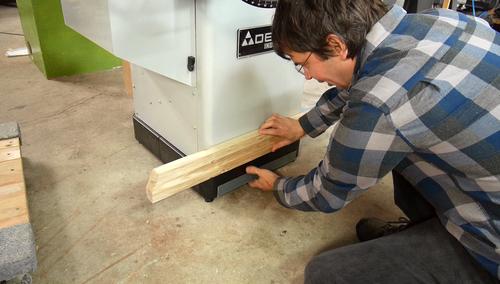 Something with an angle iron to hook to the base of the saw, attached to a
piece of 2x4 that I can slide a dolly under on both sides.
Something with an angle iron to hook to the base of the saw, attached to a
piece of 2x4 that I can slide a dolly under on both sides.
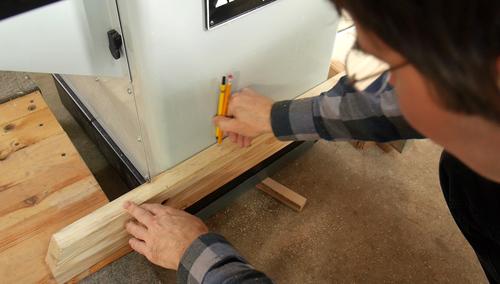 I wanted the 2x4 to be closer to the saw, so I marked an offset to the saw
on the 2x4, using an extra pencil as a spacer.
I wanted the 2x4 to be closer to the saw, so I marked an offset to the saw
on the 2x4, using an extra pencil as a spacer.
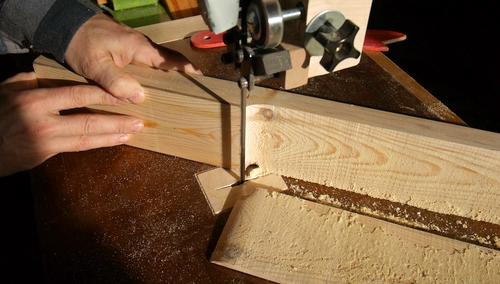 Then I cut that out on the bandsaw.
Then I cut that out on the bandsaw.
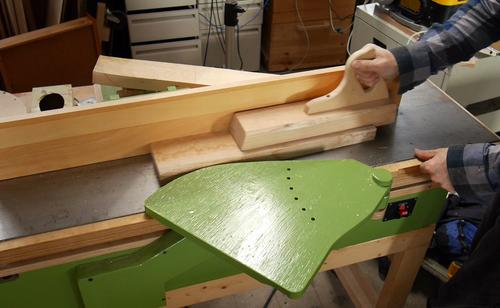 I needed two pieces of wood to tie the angle iron to the 2x4. As usual with
hardwood, I started with some rough sawn wood, first squaring it up on the
jointer,
then through the thickness planer and cutting it to final width on the table saw.
I needed two pieces of wood to tie the angle iron to the 2x4. As usual with
hardwood, I started with some rough sawn wood, first squaring it up on the
jointer,
then through the thickness planer and cutting it to final width on the table saw.
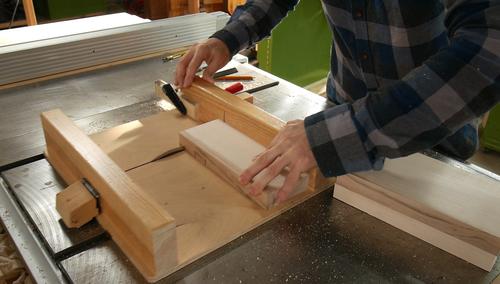
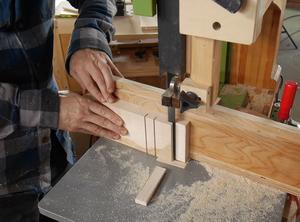 I had to cut a wide rabbet on one side of the joining pieces to make it
fit the thicker 2x4.
First I cut some slots on the table saw, then removed most of the waste
using the bandsaw...
I had to cut a wide rabbet on one side of the joining pieces to make it
fit the thicker 2x4.
First I cut some slots on the table saw, then removed most of the waste
using the bandsaw...
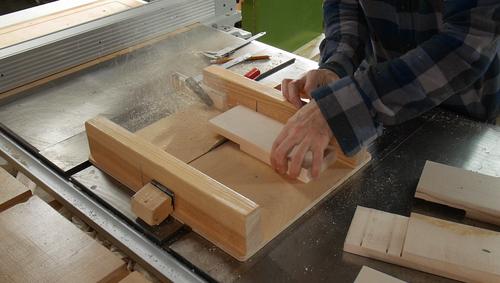 ... and finished up the cut by sliding it side-to-side over the saw blade to
flatten the rabbet.
... and finished up the cut by sliding it side-to-side over the saw blade to
flatten the rabbet.
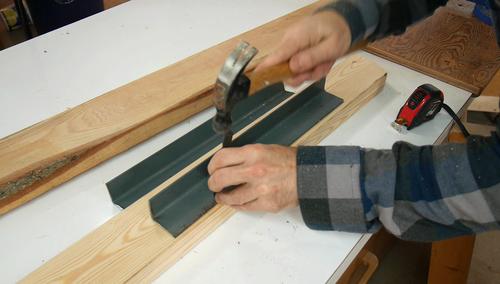 Punching divots for where the mounting holes will go on the angle iron.
The divot helps guide the center of the drill and keeps it from wandering
before it starts cutting.
Punching divots for where the mounting holes will go on the angle iron.
The divot helps guide the center of the drill and keeps it from wandering
before it starts cutting.
 This piece of bed frame angle iron was easier to drill than the
stuff I used for a fence around a stove
I was able to drill 12 holes without resharpening the drill!
This piece of bed frame angle iron was easier to drill than the
stuff I used for a fence around a stove
I was able to drill 12 holes without resharpening the drill!
Being able to do the drilling on the drill press set to a very slow speed made it easier.
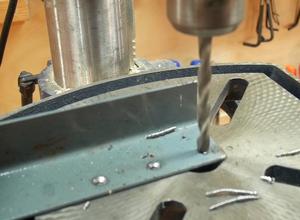 I then used a larger drill bit to add a countersink to the holes.
I then used a larger drill bit to add a countersink to the holes.
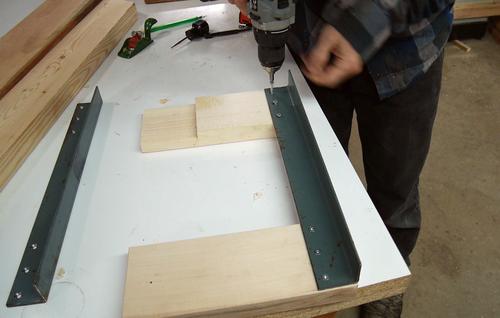 Screwing it on to the hardwood pieces. I pre-drilled the holes for the screws.
Screwing it on to the hardwood pieces. I pre-drilled the holes for the screws.
I also have one of the workpieces backward here (oops), I fixed that after I filmed this. No doubt people will comment about it in the video.
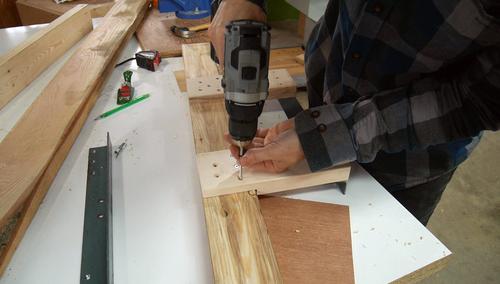 Screwing the hardwood pieces onto the 2x4.
Screwing the hardwood pieces onto the 2x4.
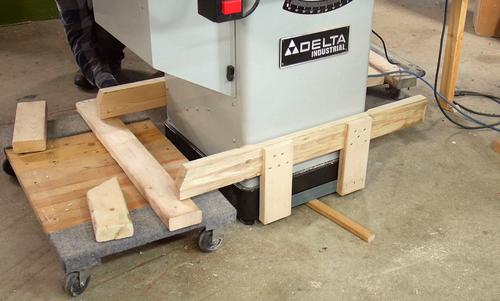 I made two of these brackets (for the front and back). With the hooks in place,
I'm sliding some moving dollies under the ends of the 2x4s
I made two of these brackets (for the front and back). With the hooks in place,
I'm sliding some moving dollies under the ends of the 2x4s
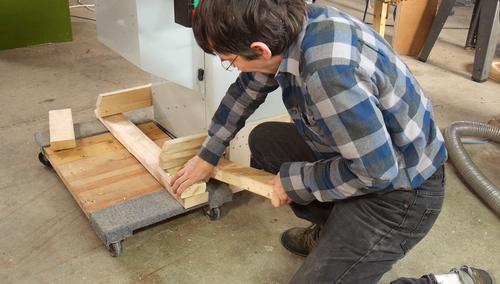 I lever up one corner at a time with a piece of 2x4, then put another piece
of 2x4's under it to keep it elevated.
I lever up one corner at a time with a piece of 2x4, then put another piece
of 2x4's under it to keep it elevated.
It's tempting to cut a piece of wood about 4x6 cm with rounded corners and a right angle handle on the end. I could just put that under the lifting brackets and turn it 90 degrees to lift the saw. But I don't anticipate needing this jig often enough to make it worthwhile.
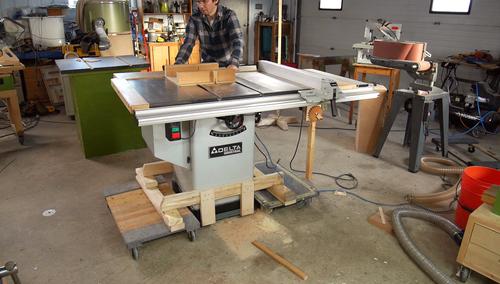 With four corners lifted, the saw is fully supported on the two dollies
and I can now easily pull it across the shop.
With four corners lifted, the saw is fully supported on the two dollies
and I can now easily pull it across the shop.
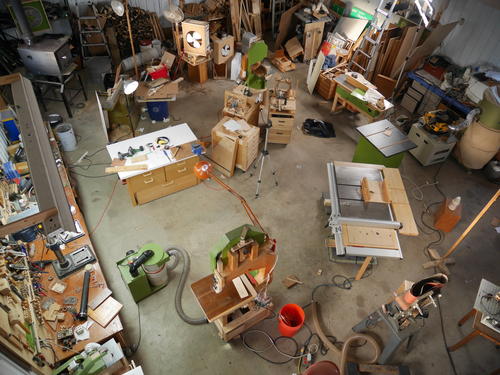 The reason I made these is because I want to work on the lights in the shop,
which means I need to move my homemade scaffold
to where I normally have the table saw.
The reason I made these is because I want to work on the lights in the shop,
which means I need to move my homemade scaffold
to where I normally have the table saw.
See also:
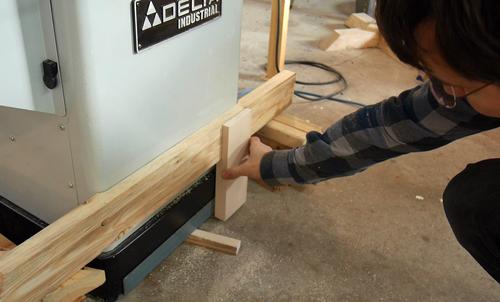
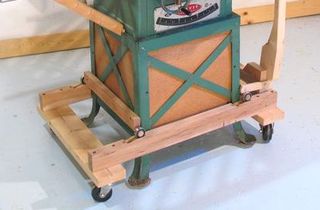 Table saw mobile base
Table saw mobile base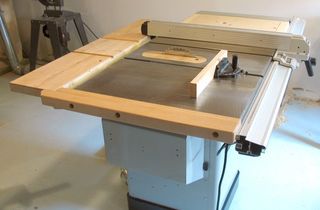 More about this
More about this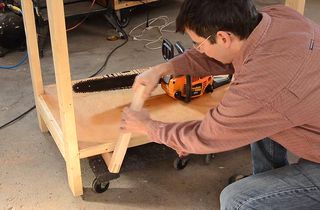 Dolly movable workbench
Dolly movable workbench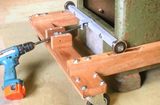
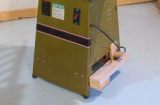 Mobile jointer base
Mobile jointer base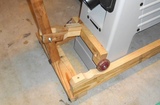 Shawn's jointer base
Shawn's jointer base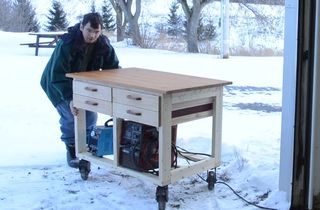 Workbench on wheels
Workbench on wheels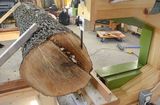 Bandsaw on a dolly sawmill
Bandsaw on a dolly sawmill